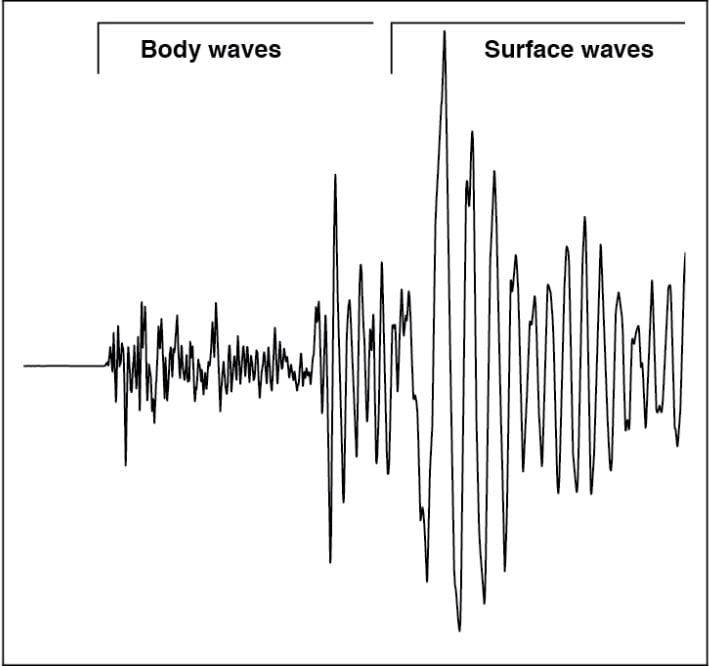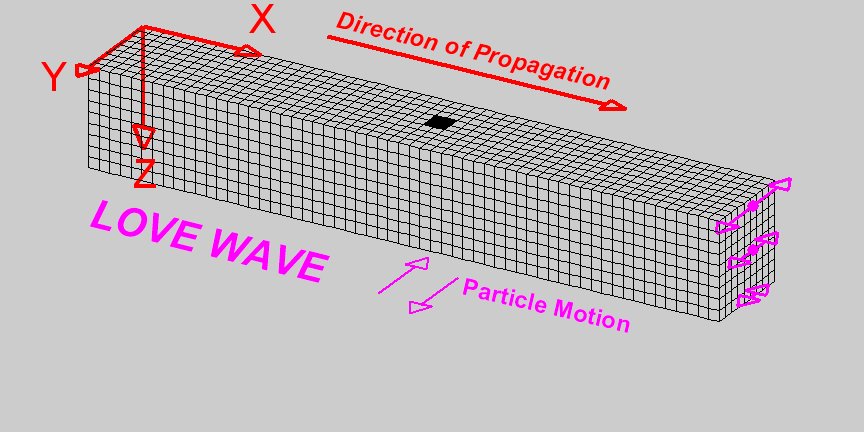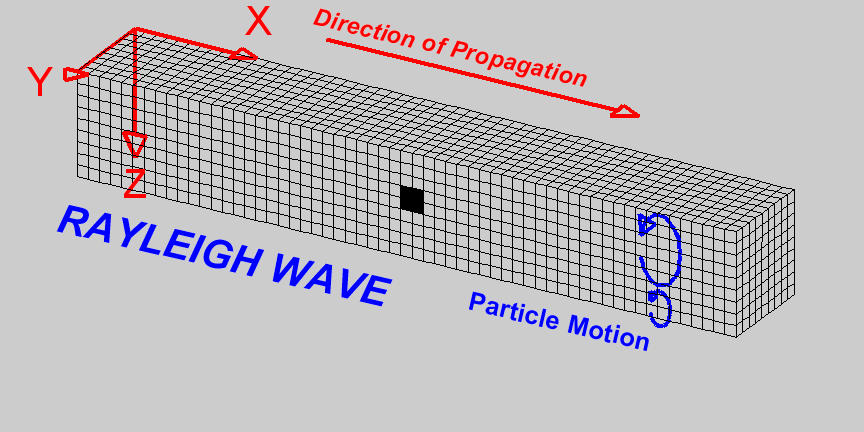Slower, Lower Frequency
Surface waves travel more slowly through Earth material at the planet’s surface and are predominantly lower frequency than body waves. They are easily distinguished on a seismogram. Shallow earthquakes produce stronger surface waves; the strength of the surface waves are reduced in deeper earthquakes.

Love Waves
One kind of surface wave is called a Love wave, named after British mathematician A. E. H. Love, who worked out the mathematical model for this wave type in 1911. Love waves produce entirely horizontal motion. The amplitude is largest at the surface and diminishes with greater depth.

Rayleigh Waves
The other kind of surface wave is the Rayleigh wave, named for John William Strutt, known as Lord Rayleigh, who mathematically predicted the existence of this kind of wave in 1885. A Rayleigh wave rolls along the ground with a more complex motion than Love waves. Although Rayleigh waves appear to roll like waves on an ocean, the particle motion is opposite of ocean waves. Because it rolls, it moves the ground up and down, and forward and backward in the direction that the wave is moving. Most of the shaking felt from an earthquake is due to the Rayleigh wave, which can be much larger than the other waves. Like Love waves, the amplitude of the wave decreases dramatically with depth.
